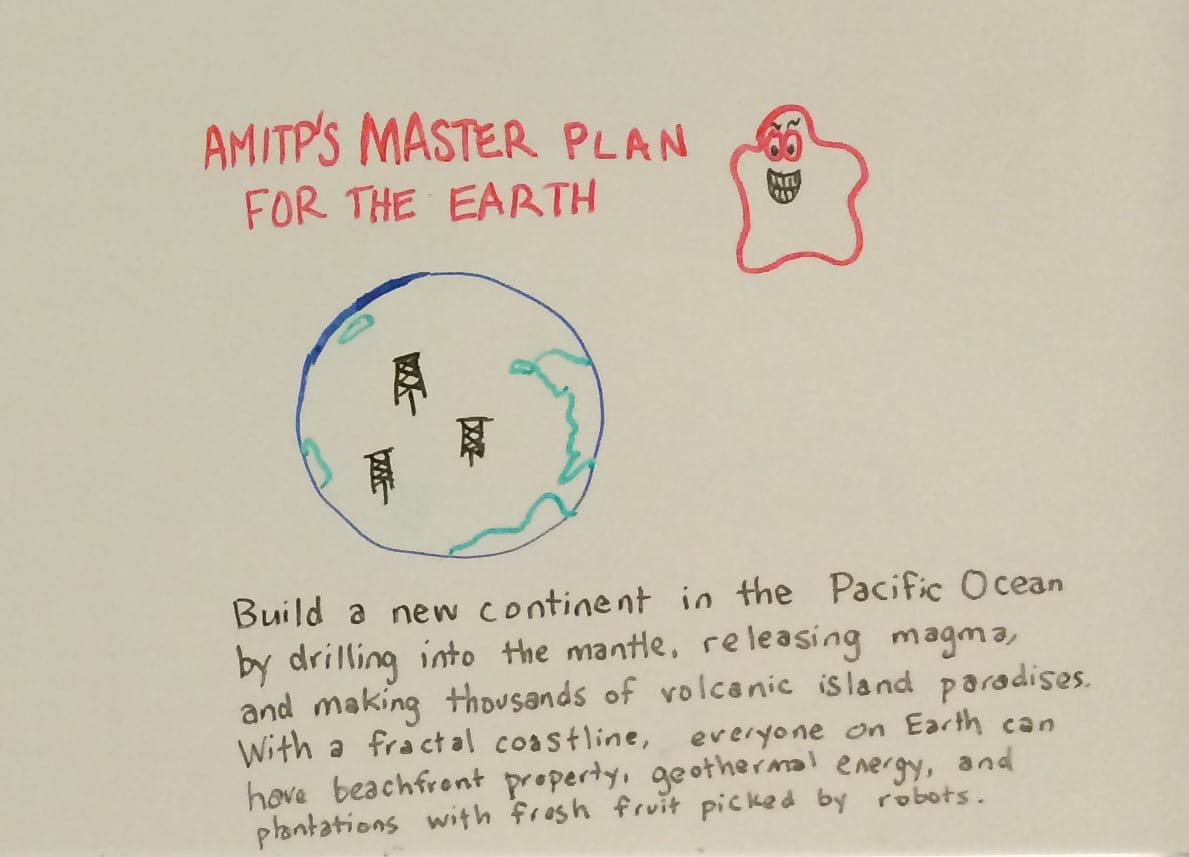Fractal islands in the Pacific #
I'm not a big fan of the Pacific Ocean. There. I said it. I like water/land interfaces. Coasts, rivers, lakeshores, beaches, coral reefs, tide pools. The Pacific Ocean has too few of these. So … let's fix it. Here's an idea I had from around 2003 but never blogged about:

Labels: future
iTunes Sync Error -256 #
This was a mystery.
I had been messing with my photo sync settings in iTunes, so that I could get more photos onto my iPhone. I started getting this iTunes sync error, -256. I googled for this but naturally Google ignored "256", as it seems to enjoy ignoring the most important words in my queries. I couldn't find an answer, and I had no luck deleting and resyncing photos. I decided I should wipe the phone and restore from backup at some point, but "not today".
A few weeks later (today) I discovered the real culprit. At some point in the past few months I had accidentally deleted podcast files in iTunes. I had restored the iTunes catalog file, and I had restored the files themselves from Trash. Or so I thought. I discovered today that I hadn't gotten them all. Once I fixed that (by deleting in iTunes and telling it to download them again), the photo sync worked again!
Grr1: iTunes does too many things, and it's hard to diagnose errors. Grr2: "error -256" is unhelpful. If it told me what it was doing at the time, it would've helped me realize it was podcasts and not photos that were the problem. Grr3: iTunes catalog and the files on disk can get out of sync; this is fragile.
I'm writing this blog post so that if anyone else has error -256, and convinces Google not to ignore that term, they might find a solution here.
Labels: mac
Heat needed to melt ice #
I knew that melting ice takes heat, but didn't have a good sense for how much. I decided to calculate it.
- Specific heat tells you how much heat it takes to increase temperature. For water, it's around 4.2 joules per gram of water to raise the temperature by +1°C.
- Latent heat (of fusion) tells you how much heat it takes to turn solid into liquid, while not changing temperature. For ice→water, it's 334 joules per gram of water.
So we have two different processes: water to hotter water, and ice to water. How do they compare? Let's divide 334 J/g/°C ÷ 4.2 J/g = 79.5 °C.
That means the same amount of heat can do either:
- Melt ice.
- Raise water temperature by 79.5°C (143°F).
Yow!
That's much higher than I expected. Did I do the calculation wrong? I checked specific heat and latent heat again, but I can't see anything wrong with the calculation.
Now imagine what happens with climate change. If you add heat to a system, and there's ice around, it will melt the ice. But if there's no ice around, that same amount of heat will increase the temperature by 79.5°C (143°F). eeek!!
(please tell me I did the calculation wrong, because those numbers are scary)
Labels: environment